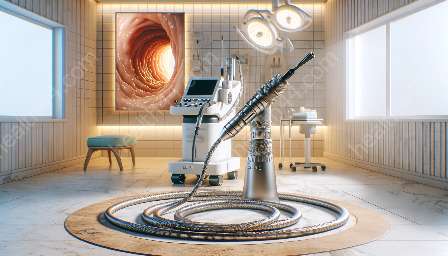In recent years, medical technology has made great strides, and one area that has seen significant advancements is surgical endoscopy. Surgical endoscopes are an essential tool in modern medicine, revolutionizing the way doctors and surgeons diagnose, visualize, and treat patients.
Endoscopes are medical devices used for visual examination of the interior of a body cavity or organ. They are equipped with a light source and a camera at the tip, allowing for real-time visualization and image capture. The field of surgical endoscopy encompasses various types of endoscopes tailored for specific medical procedures and applications.
The Evolution of Endoscopes
Early endoscopes were rigid and had limited maneuverability, making them suitable for only a few procedures. However, advancements in materials and engineering have led to the development of flexible and versatile endoscopes that can access various parts of the body with minimal invasiveness. The evolution of endoscopes has contributed to reducing patient discomfort and recovery time, making minimally invasive procedures more accessible and effective.
Types of Surgical Endoscopes
1. Gastrointestinal Endoscopes: These endoscopes are designed for examining the digestive tract, including the esophagus, stomach, and intestines. They are essential for diagnosing conditions such as ulcers, inflammation, and cancer.
2. Laparoscopes: Laparoscopes are used for minimally invasive surgery in the abdominal and pelvic cavities. They enable surgeons to perform procedures such as minimally invasive surgery, cholecystectomy, and appendectomy with reduced scarring and faster recovery.
3. Bronchoscopes: These endoscopes are used to examine the respiratory system, including the lungs and bronchial tubes. They assist in diagnosing and treating conditions such as lung cancer, infections, and foreign body removal.
Applications of Surgical Endoscopes
The applications of surgical endoscopes are widespread and continue to expand, with the following being some of the key areas:
Diagnostic Procedures
Endoscopes play a crucial role in diagnosing various medical conditions by providing direct visualization of the affected areas. Through endoscopic examinations, doctors can detect abnormalities, take tissue samples for biopsies, and make informed decisions regarding further treatment.
Surgical Interventions
Endoscopes have transformed the landscape of surgical interventions by enabling minimally invasive procedures. Surgeons can perform complex surgeries using endoscopic techniques, reducing the need for large incisions and offering patients shorter recovery times and reduced risk of complications.
Therapeutic Treatments
Endoscopes are used for therapeutic purposes, such as removing polyps, cauterizing bleeding vessels, dilating strictures, and placing stents in various organs. These minimally invasive treatments offer patients effective solutions with fewer side effects.
Advantages of Surgical Endoscopes
1. Minimally Invasive: Endoscopic procedures involve small incisions, leading to reduced trauma, pain, and scarring for patients.
2. Direct Visualization: Endoscopes provide direct visualization of internal organs, allowing for accurate diagnosis and targeted treatments.
3. Faster Recovery: Patients undergoing endoscopic procedures typically experience faster recovery times and reduced hospital stays compared to traditional surgeries.
4. Reduced Risk of Infection: Minimally invasive procedures with endoscopes lower the risk of postoperative infections, promoting better outcomes for patients.
Future Prospects and Innovations
The future of surgical endoscopes holds promising developments, including advancements in imaging technology, robotics, and miniaturization. Innovations such as enhanced imaging modalities, 3D visualization, and remote-controlled robotic platforms are set to further improve the precision and outcomes of endoscopic procedures.
Furthermore, the integration of artificial intelligence and machine learning algorithms into endoscopic systems is poised to revolutionize diagnostic accuracy and treatment planning, ultimately benefiting patients and healthcare providers.
Conclusion
Surgical endoscopes have undoubtedly transformed the practice of modern medicine, offering patients the benefits of minimally invasive procedures and precise diagnostic and therapeutic capabilities. As the field of endoscopy continues to evolve, it is essential to stay abreast of the latest technologies and innovations to enhance patient care and clinical outcomes.


